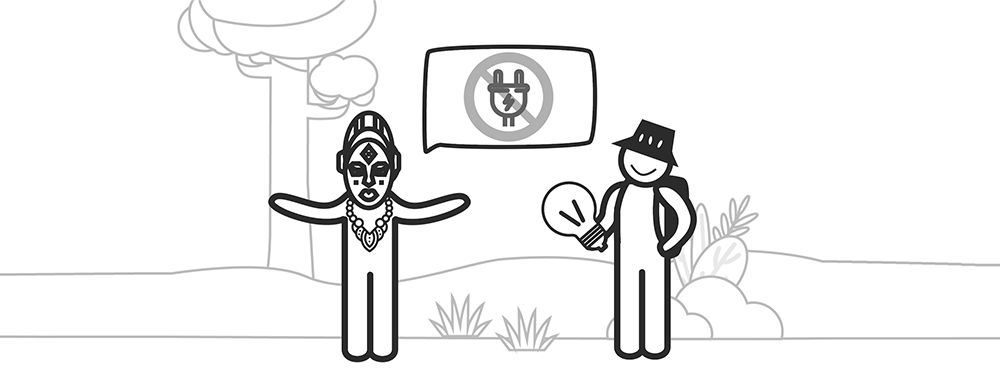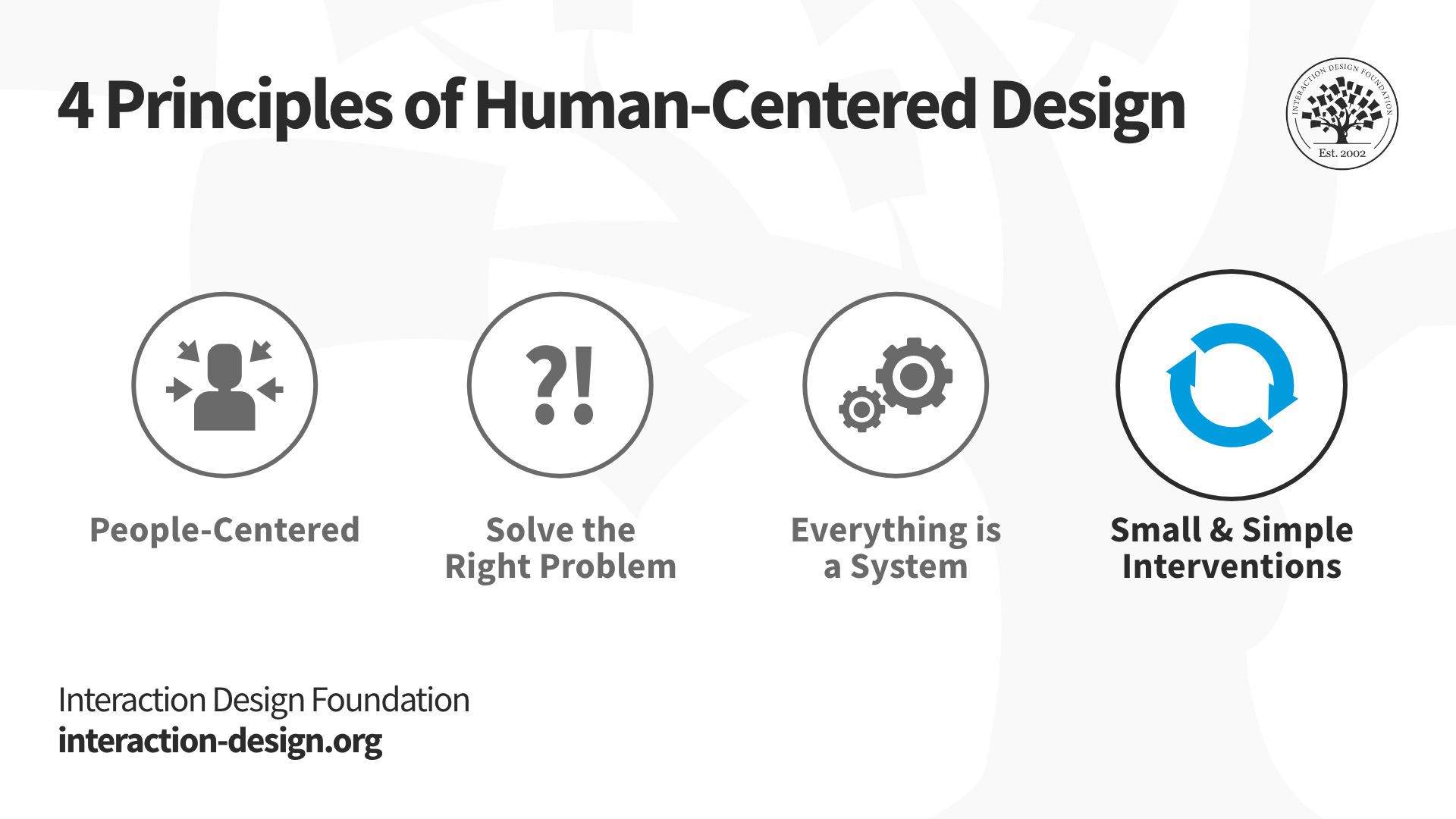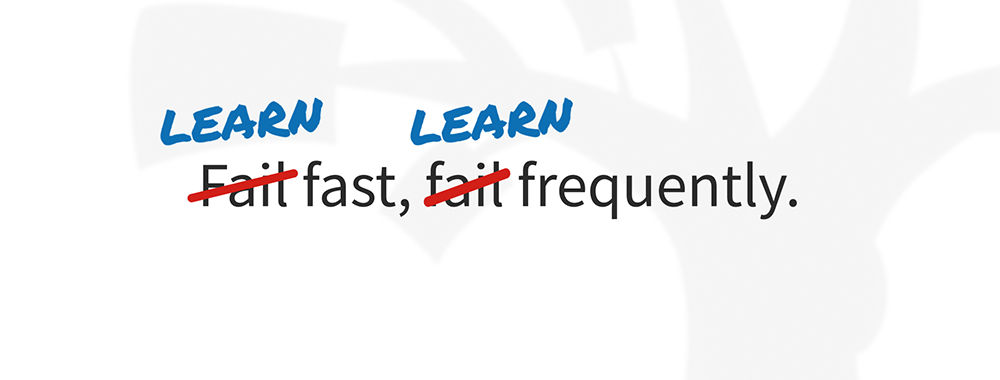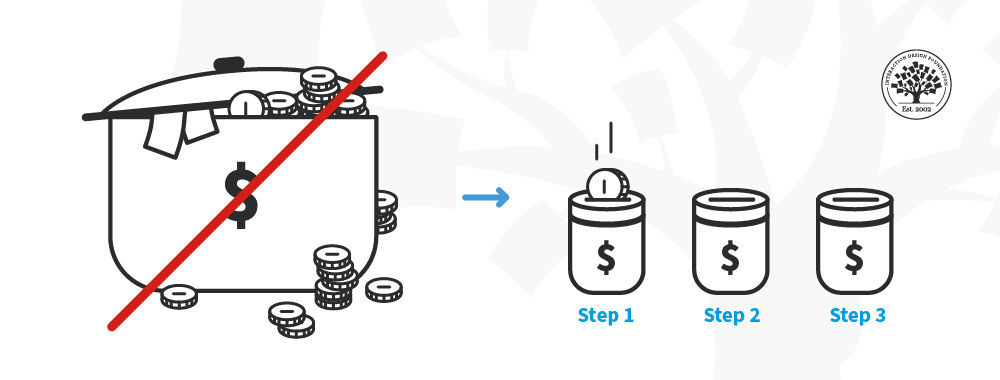Human-Centered Design: How to Focus on People When You Solve Complex Global Challenges

- 569 shares
- 6 mths ago
Incrementalism is an approach designers use to address large problems. Doing incremental design, they wait for a chance to take small steps toward a known goal and win community support. Designers learn from and modify these interventions to match the current situation, promoting sustainable design instead of investing in high-risk grand solutions.
“The day the product team is announced, it is behind schedule and over its budget.”
— Don Norman: Father of User Experience design, author of the legendary book The Design of Everyday Things, co-founder of the Nielsen Norman Group, and former VP of the Advanced Technology Group at Apple.
See why incrementalism works best for tricky, real-world problems.
Improvised Tube Well Filter for feeding Cattle pasture water pump (File:Schotten Rudingshain Cattle Pasture pump s.png) near Rudingshain, Schotten, Hesse, Germany by UuMUfQ (CC-BY-SA-3.0,2.5,2.0,1.0)
https://commons.wikimedia.org/wiki/File:Schotten_Rudingshain_Schotten_Improvised_Tube_Well_Filter_for_Cattle_Pasture_Pump_s.png It can seem counterintuitive to address big issues this way, but the world is far too complex to afford designers the luxury of producing grand solutions that might, at least theoretically, fix its serious problems. Apart from the massive expense and disruption such remedies involve, there’s another problem: time. We can’t hit “pause” on the rest of the world while we design miracle cures in a vacuum.
Cognitive science and usability engineering expert Don Norman considers 21st-century design the way for designers to tackle the world’s biggest and most important challenges, such as poverty, hunger and unequal access to healthcare. These critical challenges are difficult to solve because they involve complex interconnected systems that feed back and forth between one another. Furthermore, humans are designed to understand simple cause-and-effect chains instead of approaching feedback loops insightfully. For example, poverty is often the cause of many other significant socio-technical problems, but what about the many factors that feed into it and from it that keep the vicious cycle going? Designers face such complex socio-technical systems, which, like wicked problems, are:
Difficult to define.
Complex systems.
Difficult to know how to approach.
Difficult to know whether a solution has worked.
Associate Professor of Economics at Yale University Charles E. Lindblom’s article “The Science of ‘Muddling Through’” appeared in 1959. Although it focused on the policy-formulation approach of the U.S. executive bureaucracy, Lindblom’s work contains a kernel of truth for designers: Avoid applying grand solutions to big problems. Not only are these obscenely expensive, they also end up disrupting too many people’s lives. Moreover, big problems are, like other moving targets, hard to hit. And by the time you’d be ready with a grand solution, too much would have changed, anyway: the situation, the culture of the people you’re trying to help, even the problem itself. That’s why Norman’s principles of human-centered design are invaluable:
People-Centered: Focus on people and their context to create appropriate solutions. This includes participatory design that ensures user involvement in the process.
Understand and Solve the Right Problems: Address the root causes and underlying fundamental issues rather than just symptoms.
Everything is a System: Recognize that everything exists as a system of interconnected parts.
Small and Simple Interventions: Work iteratively rather than rushing to solutions.
Incrementalism is central to the last one: Small and simple interventions.

© Interaction Design Foundation, CC BY-SA 4.0
Make the best of the situation and use human- or humanity-centered design:
Be people-centered. Live among the people you want to help, to understand the true nature of the issues they face, their ways of seeing these, and any attempts they’ve made to solve them. For example, your population might be malnourished and can’t use all their farmland because of ill-marked landmine fields from an old civil war.
Solve the right problem. Deeply examine the factors driving the people’s problems. Try the 5 Whys approach. The landmines might seem to be the root cause, but they might be symptoms of something else that runs deeper (e.g., longstanding group factionalism). So, in this case you might suggest farming alternatives, to feed the people sustainably so they can work towards progress. For example, might they grow food hydroponically (i.e., in water containers) until demining efforts clear the land properly?
See everything as a system. Use systems thinking to untangle as many parts of the problem(s) as possible. Complex socio-technical systems demand hard investigation and working alongside experts and, principally, the people you intend to help. Community-driven design is crucial for finding optimal solutions within the system(s) involved.
Now, take the first steps towards a real solution:
Wait for the opportunity to do a small test of the small-scale solution you’ve co-created with the community. E.g., Build hydroponic farms in old, unused buildings using repurposed mirrors and solar panels.
If it’s successful, evaluate the degree of success; then adapt and modify it or repeat it several times. If it fails, learn from the experience to guide yourself towards the known goal. E.g., you introduce more cheap-to-grow crops in two more improvised hydroponic farms.
If it keeps succeeding, you’ll gain more community support and find you/they can achieve even more. E.g., the community can start selling their surplus crops.
Over time, monitor outcomes and modify the approach as needed. E.g., the hydroponic farms win government support, and demining efforts improve to help clear the way for safe farmland again.
Tips:
Divide big problems extensively and be patient for the best chance to take the best small-level action.
Work with the local community leaders and listen carefully to their views about everything.
Check if some of the community’s existing solutions are salvageable or modifiable.
Remember, low-tech solutions are typically cheap and easy to build, understand, use and maintain.
Move slowly; let the results speak for themselves to the community, government agencies and beyond.
The journey is rarely smooth or predictable, but small steps in the right direction work best.
Ready to shape the future, not just watch it happen? Join the Father of UX Design, Don Norman, in his two courses, Design for the 21st Century and Design for a Better World, and turn your care for people and the planet into design skills that elevate your impact, your confidence, and your career.
Norman, Donald A. Design for a Better World: Meaningful, Sustainable, Humanity Centered. Cambridge, MA, MA: The MIT Press, 2023.
Incrementalism in design is making small, step-by-step improvements to existing systems rather than creating entirely new ones. This approach is practical and often necessary, especially in complex environments like healthcare, education, or government, where sweeping changes can be risky or disruptive. Big solutions can be too expensive and take too long to implement; indeed, the problem itself may have changed by the time a big-fix effort is ready.
Incrementalism, or “muddling through,” works well when designers focus on solving real user problems within current constraints. Instead of aiming for a “perfect” solution, they improve what already exists through continuous iteration. Good design does not always mean revolution; it often means careful evolution.
This approach helps teams gather feedback, test ideas quickly, and reduce the risk of failure.
Watch as UX Pioneer and the Godfather of UX Design, Don Norman explains incrementalism:
Improvised Tube Well Filter for feeding Cattle pasture water pump (File:Schotten Rudingshain Cattle Pasture pump s.png) near Rudingshain, Schotten, Hesse, Germany by UuMUfQ (CC-BY-SA-3.0,2.5,2.0,1.0)
https://commons.wikimedia.org/wiki/File:Schotten_Rudingshain_Schotten_Improvised_Tube_Well_Filter_for_Cattle_Pasture_Pump_s.png Take our courses Design for the 21st Century with Don Norman and Design for a Better World with Don Norman for a vast array of important insights.
The main benefits of using an incremental approach in UX design include faster feedback, reduced risk, and better alignment with real-world constraints. Rather than launch a massive redesign, designers make small, user-focused changes that improve the product over time. This helps teams learn what works, avoid costly mistakes, and respond quickly to user needs.
Incremental design also builds trust with users. Gradual changes are easier to adopt and less likely to disrupt their experience. It’s more “alive” as it supports continuous improvement—a core principle in Lean and Agile practices—by focusing on value delivery in short cycles.
This approach works especially well in large systems or regulated environments, where big overhauls are too risky. It allows designers to make meaningful progress without waiting for perfect conditions. Even if “perfect” conditions were to arise, chances are they would pass into imperfect ones by the time even the most capable design team could release the “perfect solution.”
Watch as UX Pioneer and the Godfather of UX Design, Don Norman explains incrementalism:
Take our courses Design for the 21st Century with Don Norman and Design for a Better World with Don Norman.
To apply incremental design in a real UX project, start by identifying small, high-impact areas that you can improve quickly—like simplifying a form, clarifying navigation, or speeding up a common task. Use user feedback, analytics, and usability testing to guide these priorities.
Tackle one change at a time and validate it with real users. After each improvement, assess its impact and use those insights to plan the next step. This cycle of design, test, and refine allows your team to deliver value steadily without overwhelming users or taking big risks.
Document your changes and decisions along the way. Over time, these small shifts can transform the entire experience. Incremental design keeps progress user-focused, sustainable, and responsive.
Enjoy our Master Class, Exclusive: Design for a Better World, a Discussion with Don Norman, Founding Director - Design Lab, University of California, San Diego. Co-Founder, Nielsen Norman Group.
Watch Don Norman explain important points about incremental modular design:
Incrementalism doesn’t prevent innovation in UX design, but it can be limiting if teams use it without strategic reflection. Small, steady improvements help refine products and respond to user needs. However, when teams focus on incremental tweaks, they may miss deeper issues or bigger opportunities.
Real innovation sometimes requires stepping back and rethinking the entire experience, not just polishing existing parts. If teams never question the foundation, they risk improving the wrong thing.
To balance both, combine incremental changes with moments of big-picture thinking. Regularly pause to ask, “Are we still solving the right problem?” That mindset makes incrementalism a pathway to innovation—not a roadblock.
Watch as UX Designer and Author of Build Better Products and UX for Lean Startups, Laura Klein explains important points about innovation versus incremental improvement:
Enjoy our Master Class, Design For Agile: Common Mistakes and How to Avoid Them with Laura Klein.
To decide whether a design problem needs incremental fixes or a complete redesign, examine the issue's depth and spread. If users consistently struggle with one specific feature, an incremental fix, like simplifying a form or clarifying labels, can solve the problem quickly and safely. However, if confusion, frustration, or inefficiencies appear across multiple parts of the product, it’s likely a sign of deeper flaws that a redesign should address.
Don Norman emphasizes the importance of root cause analysis. Ask why users encounter the problem and whether it’s a symptom of broader issues, like poor information architecture, outdated mental models, or misaligned user flows. If minor tweaks no longer move the “needle” towards improvements, the system may need rethinking.
Also, look at technical constraints. If the platform or codebase makes even small changes hard to implement, redesigning might be more efficient in the long term. Combine this with user research and business goals to guide the decision.
Enjoy our Master Class, Exclusive: Design for a Better World, a Discussion with Don Norman, Founding Director of the Design Lab at the University of California, San Diego, and co-founder of Nielsen Norman Group.
Incrementalism supports equity and inclusion when designers use small, ongoing changes to remove barriers and improve access for underserved users. Instead of waiting for extensive overhauls, teams can fix real problems—like confusing language, poor contrast, or biased defaults—one step at a time. These changes build momentum and create space for more profound systemic shifts.
Don Norman highlights the power of designing for humanity, not just efficiency. Incrementalism aligns with this by embedding care and empathy into everyday design work. Even minor tweaks can make a product more inclusive, especially when designers guide these with continuous user feedback and testing with diverse groups.
However, designers must stay alert. Incrementalism can reinforce existing inequities if it becomes a substitute for real change. Regular reflection ensures that each update moves toward fairness, not just surface-level polish.
Enjoy our Master Class, Exclusive: Design for a Better World, a Discussion with Don Norman.
To know if you're improving the right thing with minor changes, look closely at user behavior, feedback, and context. Good design solves real problems—not symptoms. So, start by identifying friction points through usability testing, support tickets, or drop-off analytics. Then ask: “What’s causing this issue? Are we fixing the surface, or the root?” You may need to dig down using the 5 whys approach.
Before implementing any fix, define what success looks like. Will this change reduce errors, improve flow, or boost engagement? Track those outcomes, not just outputs. If the problem persists, you may be improving the wrong thing, or need a broader change.
Check if your fix aligns with user goals and business objectives, too. Incrementalism only works when it’s intentional. You're on track if each change makes life easier for users and moves the product in the right direction.
Watch as Don Norman explains the 5 Whys method:
Enjoy exploring in our Master Class, Exclusive: Design for a Better World, a Discussion with Don Norman.
UX designers avoid getting stuck in a loop of small changes by regularly zooming out to reflect on the bigger picture. While incremental improvements help refine products, focusing only on tweaks can reinforce broken systems. Designers must ask, “Are we solving the right problem, or just smoothing over symptoms?”
To break the loop, set periodic checkpoints. Step back from day-to-day fixes and review the overall experience with fresh eyes. User research, journey mapping, or system audits can spot deeper issues. Invite cross-functional teams into the conversation to uncover misalignments.
Also, balance quick wins with long-term goals. Try a dual-track approach: one for short-term improvements and another for strategic exploration. This lets teams stay agile without losing sight of innovation or equity.
Enjoy our Master Class, Design For Agile: Common Mistakes and How to Avoid Them, with Laura Klein.
Stakeholders often prefer incremental changes because they feel safer, faster, and more predictable. Small updates are also easier to approve, budget, and release, especially in environments with tight deadlines, complex systems, or risk-averse leadership.
Incremental changes can show quick wins, which helps maintain momentum and stakeholder support. They let teams respond to user feedback, fix issues early, and measure outcomes without waiting for a big launch. This reduces risk and builds trust over time.
However, this preference can limit innovation if it’s not balanced with strategic thinking. Designers must communicate when a minor fix won’t solve the deeper issue, and help stakeholders see the long-term value of broader change.
Take our courses Design for the 21st Century with Don Norman and Design for a Better World with Don Norman.
Norman, D. A., & Verganti, R. (2014). Incremental and radical innovation: Design research versus technology and meaning change. Design Issues, 30(1), 78–96.
In this influential article, Norman and Verganti differentiate between incremental and radical innovation within the design process. They argue that human-centered design (HCD) methods are effective for incremental improvements—refinements that enhance existing products or services. However, they contend that HCD is less effective for achieving radical innovation, which requires fundamental changes in technology or meaning. The authors introduce the "hill-climbing" metaphor to illustrate how designers optimize within existing paradigms but may struggle to identify entirely new ones. This work is pivotal in understanding the limitations and strengths of HCD, emphasizing the need for different approaches when aiming for transformative design solutions.
Norman, D. A. (2023). Design for a Better World: Meaningful, Sustainable, Humanity centered. The MIT Press.
In Design for a Better World, Don Norman expands upon his foundational work in human-centered design, advocating for a shift towards humanity-centered design to address global challenges. He introduces the concept of "incremental modular design," emphasizing the importance of small, community-driven changes that collectively lead to significant impact. This approach aligns with UX principles of iterative development and user-centered design, promoting adaptability and sustainability. Norman's insights are crucial for designers aiming to create meaningful and lasting solutions in an increasingly complex world.
Remember, the more you learn about design, the more you make yourself valuable.
Improve your UX / UI Design skills and grow your career! Join IxDF now!
You earned your gift with a perfect score! Let us send it to you.
We've emailed your gift to name@email.com.
Improve your UX / UI Design skills and grow your career! Join IxDF now!
Here's the entire UX literature on Incrementalism by the Interaction Design Foundation, collated in one place:
Take a deep dive into Incrementalism with our course Design for the 21st Century with Don Norman .
Master complex skills effortlessly with proven best practices and toolkits directly from the world's top design experts. Meet your expert for this course:
Don Norman: Father of User Experience (UX) Design, author of the legendary book “The Design of Everyday Things,” co-founder of the Nielsen Norman Group, and former VP of the Advanced Technology Group of Apple.



We believe in Open Access and the democratization of knowledge. Unfortunately, world-class educational materials such as this page are normally hidden behind paywalls or in expensive textbooks.
If you want this to change, , link to us, or join us to help us democratize design knowledge!
